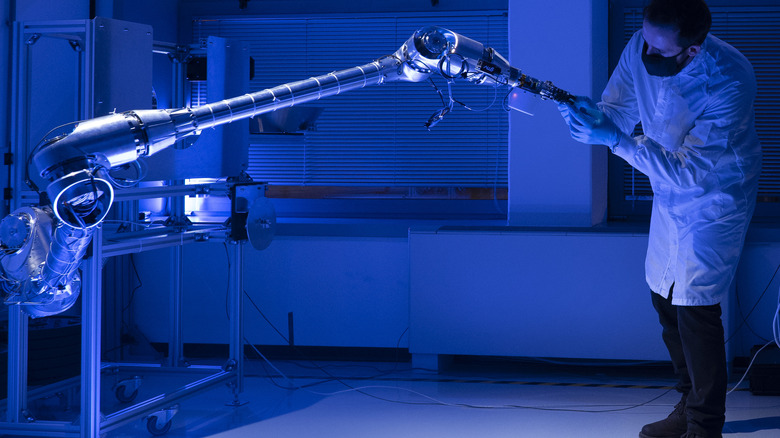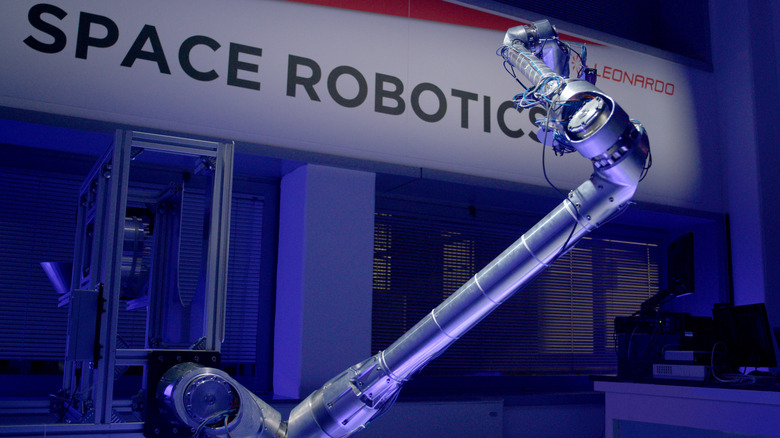This Human-Like Autonomous Robot Will Help Bring Mars Samples To Earth
NASA's Perseverance rover is currently scouting the Martian surface to find an appropriate landing strip for the upcoming Mars Sample Return (MSR) spacecraft. As preparations for the MSR Campaign continue in full swing, the European Space Agency (ESA) has detailed the robotic arm that will pick up tubes of soil samples collected by the Perseverance rover and safely move them to the Mars Launch System.
Named the Sample Transfer Arm (STA), it will be designed and manufactured by the Italian aerospace company Leonardo. What's special about the robotic arm, which is about 8.2 feet long, is that it's said to "see" and "feel" in its own algorithmic skin, and it'll also be able to make crucial decisions on its own. Already past the prototyping phase, the robotic arm is slated for delivery in 2025 so that it can be attached to the NASA Sample Retrieval Lander.
Labeled as a "jewel-in-the-crown of space robotics," the robotic arm copies the fundamental design of a human arm, complete with its own elbow, shoulder, and wrist regions. Armed with its own set of mechanical brain and eyes (that is, a dual camera system), the STA will perform a wide range of tasks like avoiding impact with Martian boulders, collecting the right sample tubes, shifting them all into a container, and making sure that the lid is closed before the return mission vehicle blasts off the surface of Mars.
What's next?
David Parker, ESA Director of Human and Robotic Exploration, remarked that "handling the precious martian samples and getting them ready for delivery on an extraordinary trip from Mars to Earth is an amazing feat." ESA signed an official contract with Leonardo, which leads a European industrial consortium at the Farnborough International Airshow and will now oversee the final version tested and integrated in the coming years.
The historic Mars Sample Return mission is a joint collaboration between NASA and ESA that aims to study Martian regolith (soil) on Earth for the first time with the help of advanced equipment. It is also the first mission that involves launching a vehicle from the surface of another planet. Slated to kick off in the mid to late 2020s, the return vehicle carrying all of the Martian soil samples is expected to arrive on Earth in the early 2030s.
The next step is the launch of the Sample Retrieval Lander that will carry the sample-fetching rover, as well as a rocket called the Mars Ascent Vehicle. With the help of the robotic arm, the samples will be moved from Perseverance to the rocket. Loaded with the samples, the Mars Ascent Vehicle will then fly into orbit where the Earth Return Orbiter will collect the samples and load them into an entry vehicle. The orbiter will ferry the disk-shaped entry vehicle close to Earth, at which point the latter will detach and make its way through the atmosphere and ultimately to land.

